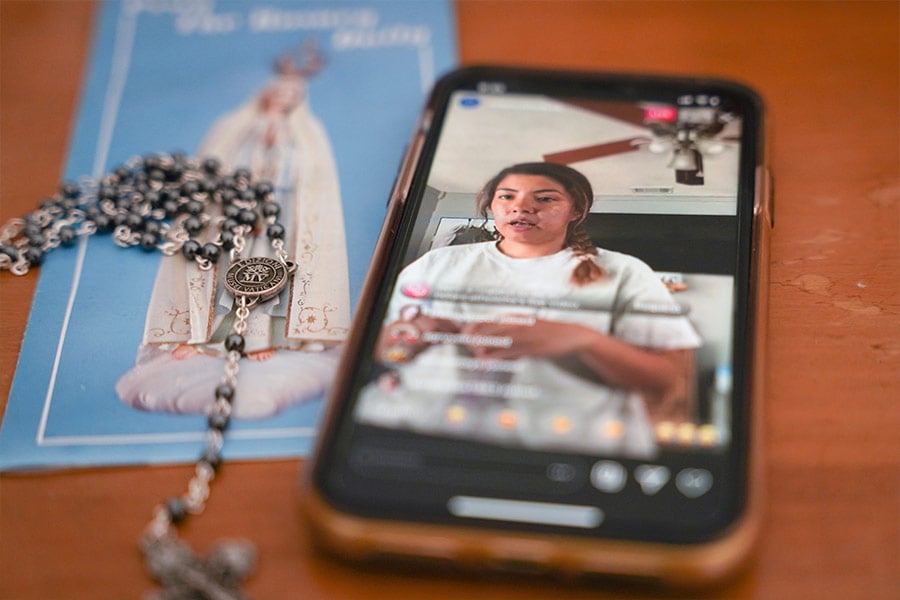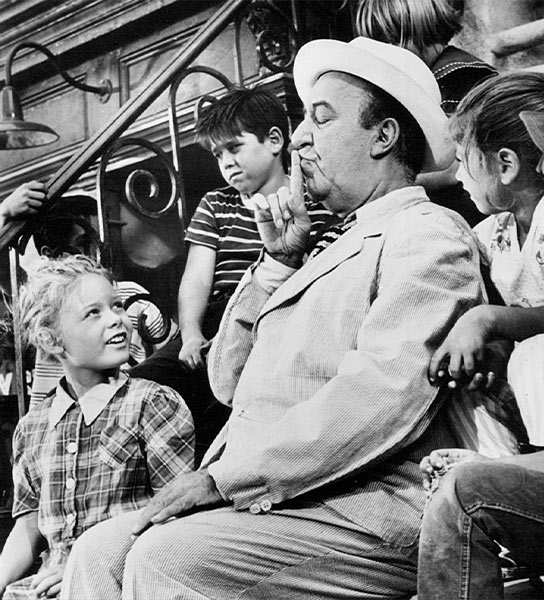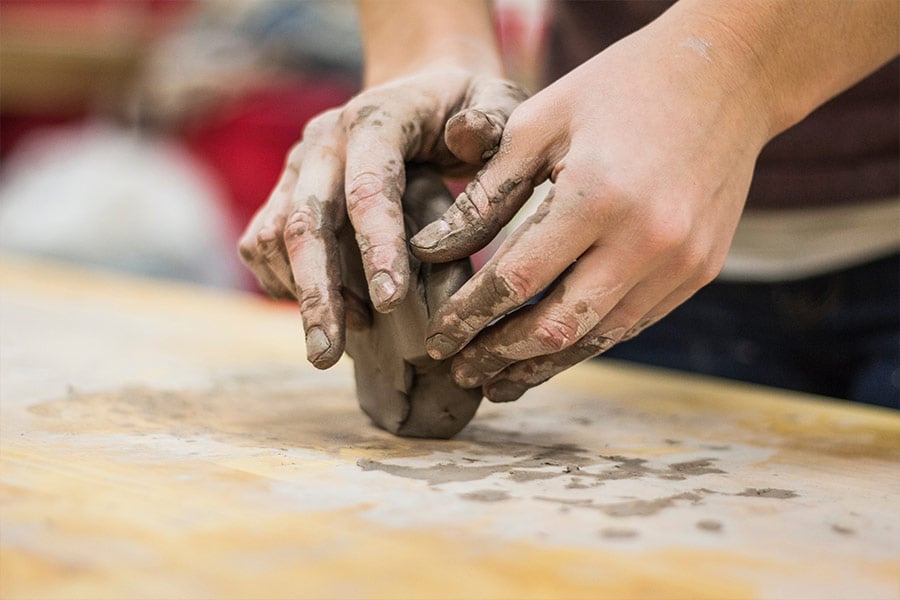A sampler of activities for Catholic families during the COVID-19 lockdown

Nolan Catholic High School LIFE Team member Cecy Soto prays the Rosary live on Nolan Catholic's Instagram account on Thursday, March 26. A variety of virtual websites and livestreaming platforms are being used by youth to keep connected with fellow young Catholics. (NTC/Anna Engelland)
FORT WORTH — Governors are advising, some even legally requiring, families to remain sequestered at home so as to slow the spread of the COVID-19 virus, what President Trump calls “the hidden enemy.”
Bringing good out of evil is the essence of Christianity. So this becomes an opportunity for parents, as their family’s primary teachers, to exercise some creativity by providing activities to inform, entertain and catechize children using low-tech and high-tech methods. Who knows? These activities may even become family traditions, and that’s important. The traditions families form, unique, recurring customs everyone looks forward to help bind families with strong links of affection, while providing memories to warm hearts in later years.
Before going on I want to tender special thanks to three good friends, Mo Huckler, former faith formation director at Assumption of the Blessed Virgin Mary in Pasadena, CA; Catholic family psychotherapist Maureen Roudine; and Prof. Lourdes Brent of Los Angeles Trade Technical College for all their suggestions in areas beyond this writer’s computer expertise.
Catholic Websites for Youths
Among many online Catholic websites families will do well to consider the following:
The Catholic Tool Box: Is a complete world unto itself. Mixing fun with education, family games, crafts, activities and lesson plans for parents presenting the Faith to children of all ages are found here. The website is well-coordinated and intelligently organized, an astounding achievement. The site’s remarkably orderly scope of catechetics can be measured from this one example:
Holy Week - lesson plan for 1st grade on up with objectives, review, vocabulary words, a Bible story with questions, activities, crafts, games, snacks, puzzles/mazes/worksheets, etc.
Catholic Inspired: It’s important for Catholics to know Catholic culture. The Catholic Inspired site is notable, not only for resources teaching the essentials of the faith, it also has information about the lore surrounding Catholic doctrine. Games and flash cards describe the Angels and their choirs; the flowers and herbs associated with the Blessed Virgin; explaining why devotion is accorded the Sacred and Immaculate Hearts; learning about heroic virtues with saint-themed guessing games, and so on.
Lifeteen: Reaches out to teenagers and helps them understand the Church in their own terms. I was impressed by an article entitled, "Don't Waste Your Quarantine" by Faith Noah, who explains that “quarantine” comes from the Italian quarantina, meaning “forty days.” Hello! A quarantine is a form of Lent! Noah encourages teens how to use the quarantine to create order in one’s life. “Order will change your life. Make a schedule. Map out every hour if you need to. Eat your meals at the dinner table, and not on the couch. This structure will be a game-changer.” And there’s a blog, "Holy Hobbies," advising teens on how to give spirituality to things teens enjoy doing. Former Faith Formation Director Mo Huckler wrote me:
"Lifeteen’s mission is to bring teens closer to Christ. Their resources are vast, the blogs are amazing and the stories are events and concerns that our youth are living. Lifeteen is truly an amazing and engaging process for families, teens, catechists, faith formation teens … The team at Life Teen is amazing and there to help. I have called on them many times for trainings of my teams, sharing materials and helping me locate resources on their website."
Digital Platforms: These video conferencing tools for assemblies in real time for Bible study can be found on Facebook, Skype, Instagram, and Zoom. Parents should be part of this to be sure that views contrary to Catholic teaching are not promoted.
Low-tech Ideas
Let me share a few low-tech activities for parents with young children to help spur creativity.

Spiritual Bouquets: This is a very old Catholic idea — a collection of prayers, Masses, Rosaries, and novenas offered to God for the benefit of friends and families. Spiritual bouquets are given for Christmas, Easter, birthdays, and other special days such as the reception of sacraments like First Communion and Confirmation. Sending the bouquet in a homemade card is another special feature usually much appreciated by the receiver. Speaking of cards …
Commonplace Books: "We both sat in silence for some little time after listening to this extraordinary narrative. Then Sherlock Holmes pulled down from the shelf one of the ponderous commonplace books in which he placed his cuttings."
— The Adventure of the Engineer’s Thumb
In my youth, as in the days of Sherlock Holmes, a commonplace book was composed of pages of heavy construction paper tied between hard covers so it could expand. Now the pages are encased in plastic. A commonplace book is where one places items of personal interest, newspaper stories, flowers, stamps, letters, poems, photos, advertisements … anything which catches one’s fancy.
For our purposes, how about collecting Easter cards? Maybe Christmas cards … not the secular kind, but the cards actually depicting the Nativity. They’re getting pretty rare these days amid the secular Santas, Frostys, Rudolphs, sleighs and snow scenes.
Twilight Zone Episodes: This is something I’ve meant to do for a long while. The original Twilight Zone series contains a number of definitely Christian-themed episodes. Wikipedia has plot synopses for each episode so parents can check out the story to lead discussion after watching it. Here’s the list:
2. One for the Angels
3. Mr. Denton on Doomsday
5. Walking Distance
6. Escape Clause
10. Judgment Night
28. A Nice Place to Visit
32. A Passage for Trumpet
33. Mr. Bevis
39. Nervous Man in a Four Dollar Room
41. The Howling Man
42. Eye of the Beholder
43. Nick of Time
47. The Night of the Meek
48. Dust
50. The Whole Truth
57. The Prime Mover
65. The Obsolete Man
70. A Game of Pool
74. Deaths-Head Revisited
76. Still Valley
80. A Quality of Mercy
94. Four O’Clock
97. The Gift
101. Cavender is Coming
103. The Changing of the Guard
105. Valley of the Shadow
106. He’s Alive
111. Printer’s Devil
121. In Praise of Pip
143. 90 Years Without Slumbering
146. I am the Night—Color Me Black
149. The Jeopardy Room
Homemade Flash Cards
Materials
- 4x6 cards found at any stationery stores
- Catholic or Christian clip art websites
- Printer
- Glue or Scotch tape
Directions
Visiting various clip art websites pictures and symbols can be downloaded and printed, then attached to the cards. There are several topical lessons which may thus be illustrated: various saints or popes; the seven sacraments; the 14 Stations of the Cross; the events of Holy Week, and the events which took place on Easter Sunday.
One special area to look over is Paul Harding’s All Crosses, a site depicting hundreds of crosses in historic and heraldic symbolism.
In addition to the clip art symbols, look for examples of art depicting episodes in the life of Christ by Carl Bloch, Heinrich Hoffmann, and most notably by J. J. Tissot, whose series of the Life of Christ and the Old Testament is extremely authentic and which inspired the art direction for such films as The Robe, David and Bathsheba, Ben Hur (1959), and even the design of the Ark of the Covenant for Raiders of the Lost Ark.
Singing Hymns

The Cyber Hymnal™ site brings up lyrics and plays melodies for 1000s of beloved hymns you can teach children.
Composer-conductor Eric Whitacre leads virtual concerts and sacred sing-alongs on YouTube.
Homemade Clay
My mother used to make a baker's clay, a kind of bread dough that can be shaped and then baked for permanent display. I recall my sister making a beautiful topographical map of South America as a school project. She used food coloring applied with Q-Tips to paint areas green and yellow, blue for lakes and rivers, and brown for the Andes Mountains. I once made a bas relief of St. Nicholas which delighted my parents so much they hung it up each Christmas.
You can use it to make Easter ornaments, or maybe a replica of the tomb of Jesus, a cave with the large round stone pushed aside.

(Unsplash.com/Alex Jones)
Valentina Wright’s Bakers Clay
Materials
- 4 cups flour
- 1 cup salt
- 1 level teaspoon alum (an ingredient used in pickling cucumbers)
- 1 1/2 cups water
- Large bowl and mixing spoon (we used a wooden one)
- A cutting board
- Newspapers
- Assorted food color, acrylic or tempera paints, markers
Mixing Directions
- First, ask your children what they’d like to create. Make some suggestions about what kind of project(s) can be done.
- Spread the newspapers on your kitchen table. In the bowl, stir flour, salt and alum together, add water sparingly as you stir. If the dough seems too dry, add another tablespoon of water. When the dough becomes a ball, knead for a few minutes on the cutting board.
- If you wish, color the clay before shaping it by dividing it into portions and kneading in a few drops of different food colors into each portion.
- It’s possible to roll or mold the clay into ornaments, flattening the clay with a rolling pin, using cookie cutters, cutting into strips, or making them free form. Impress or insert a short, flexible wire into the ornament if you want to hang it. Be sure to give it a little bend so it won’t easily slip out of the clay.
- Let your kids enjoy making whatever they wish. This should keep them busy for an hour or two. If you have acrylic or poster (tempera) paints, or markers they can be used instead of foot coloring. Note: If using acrylic paints, apply them after baking. The heat may cause it to bubble.
- When the project is painted and otherwise completed, place it on an ungreased cookie sheet (if you haven’t done so already) and bake in a 250º F oven for 20-25 minutes. Larger projects may take a few minutes longer. Remove from the oven and let it cool for 10-15 minutes.
- After baking, some projects can be mounted on simple cardboard or pasteboard with white glue. Use a wooden board for larger, heavier projects. Use a fine sandpaper, rubbing very gently if you want to smooth the surface.
- The painting can be done after baking if you wish. In order to protect and seal the creation, use clear acrylic spray, shellac, or even clear nail polish.
Sean M. Wright is an Emmy nominated television writer, a Master Catechist for the Archdiocese of Los Angeles, and is a member of the RCIA team at Our Lady of Perpetual Help parish in Santa Clarita, California. He responds to comments sent to [email protected].
